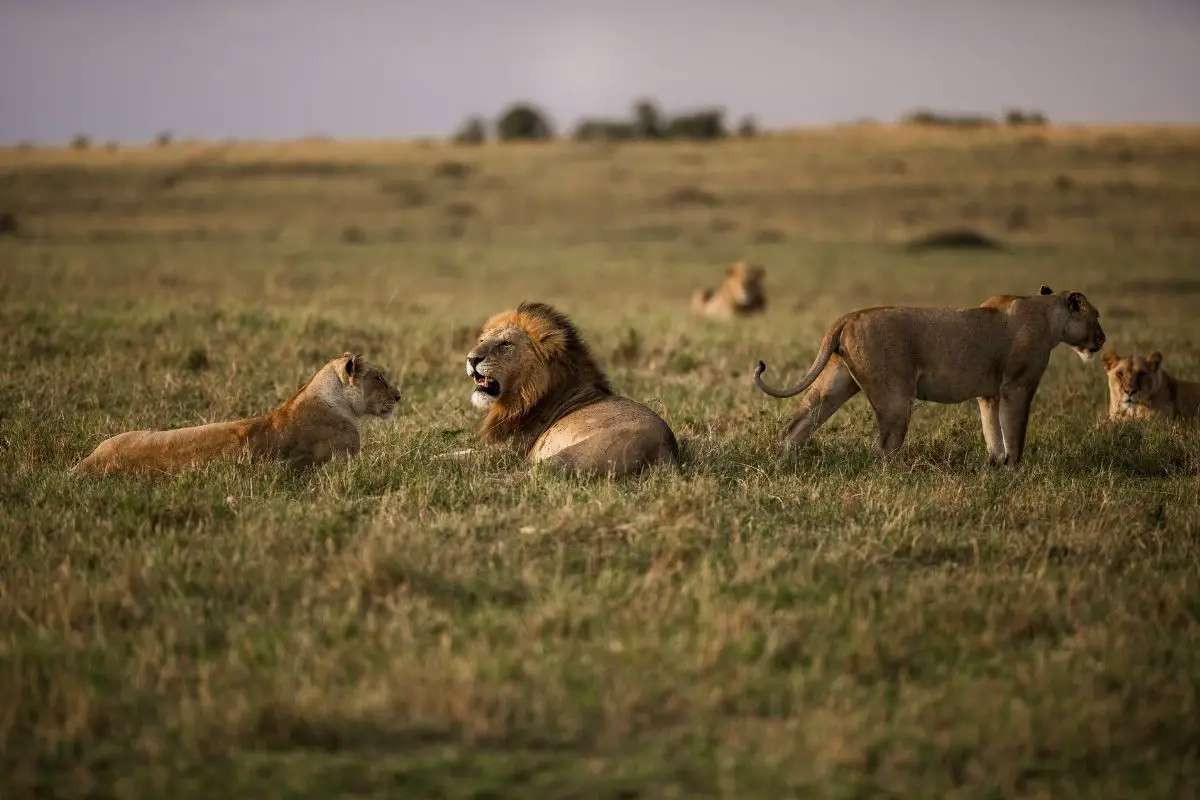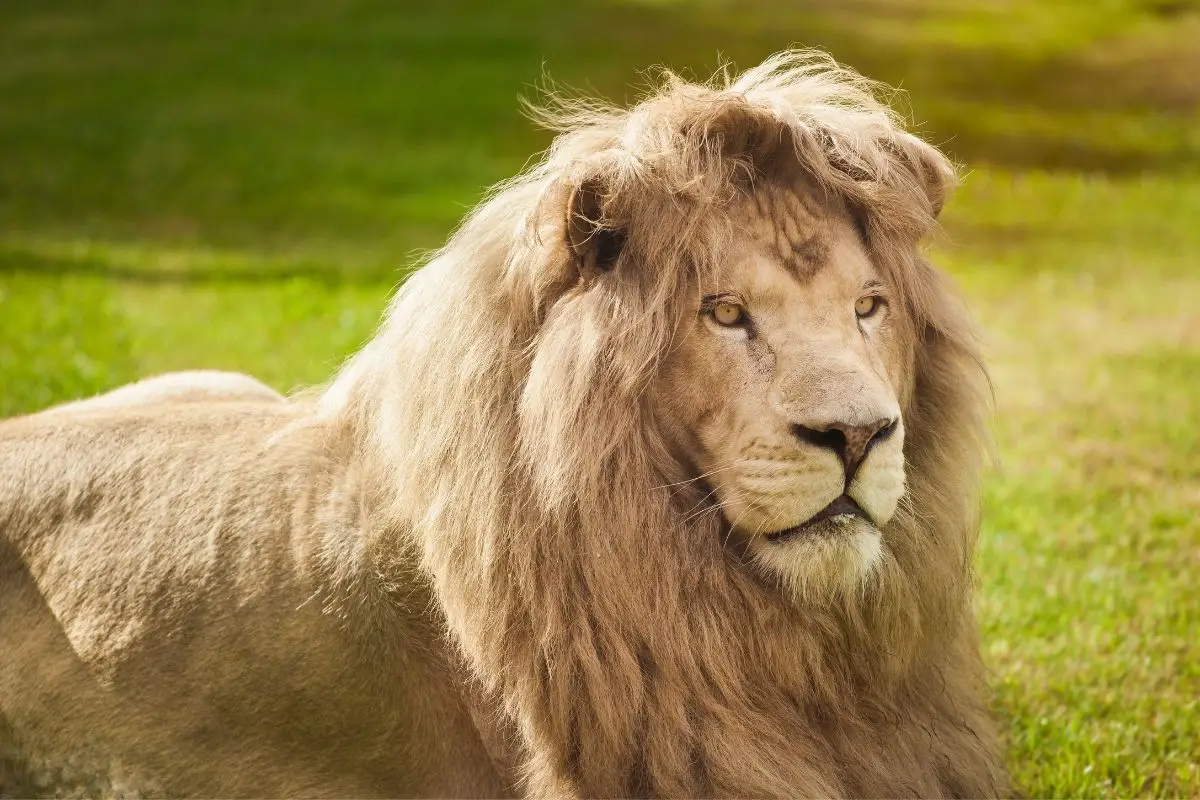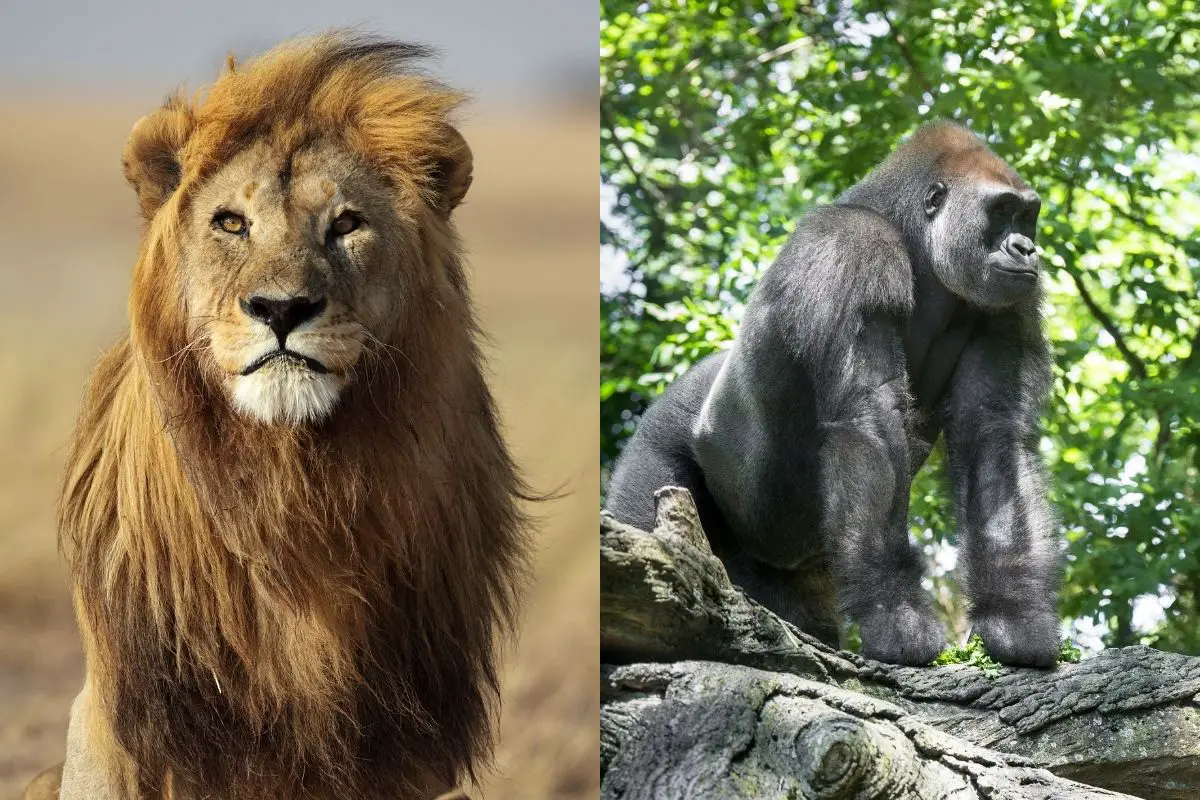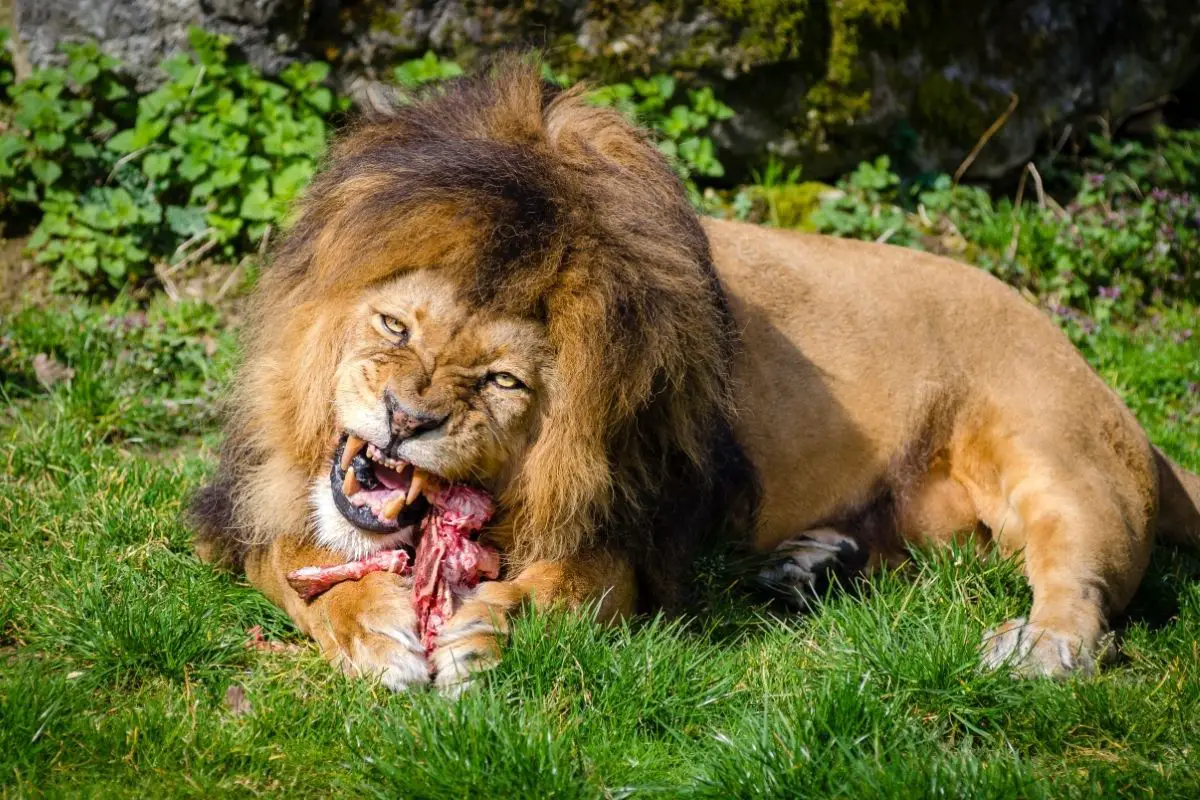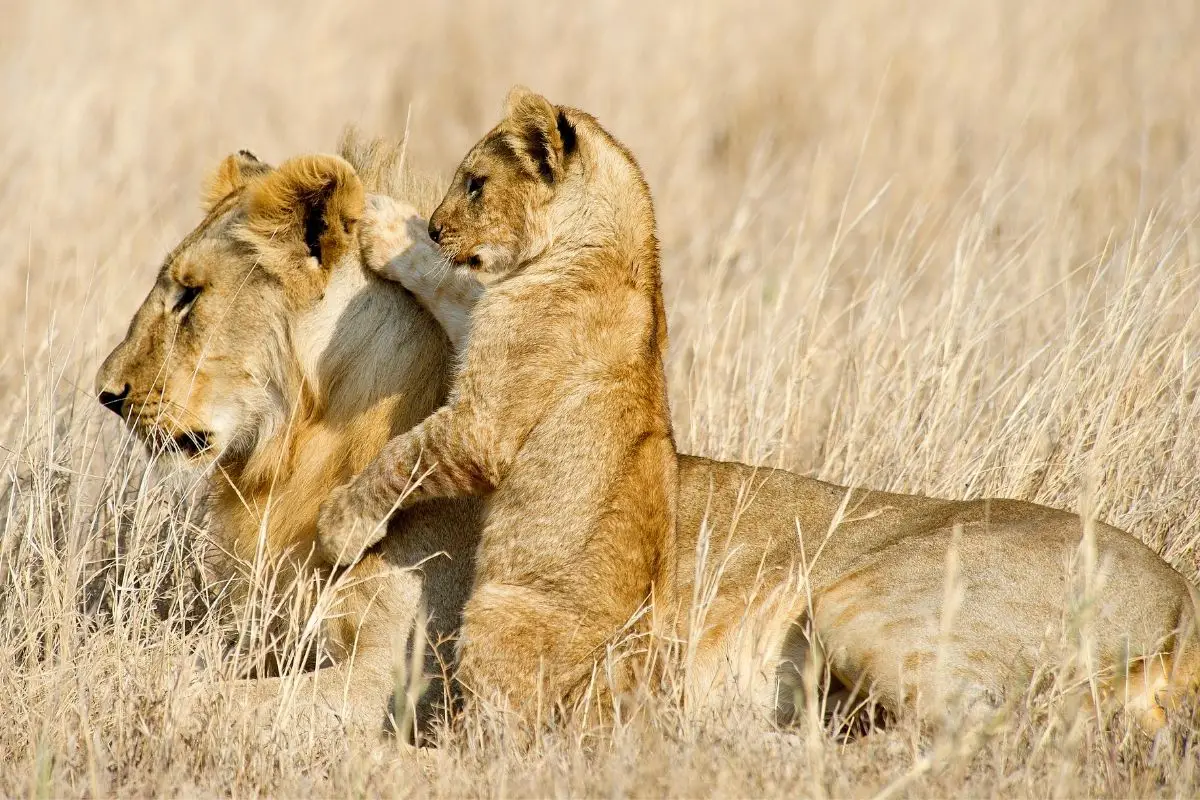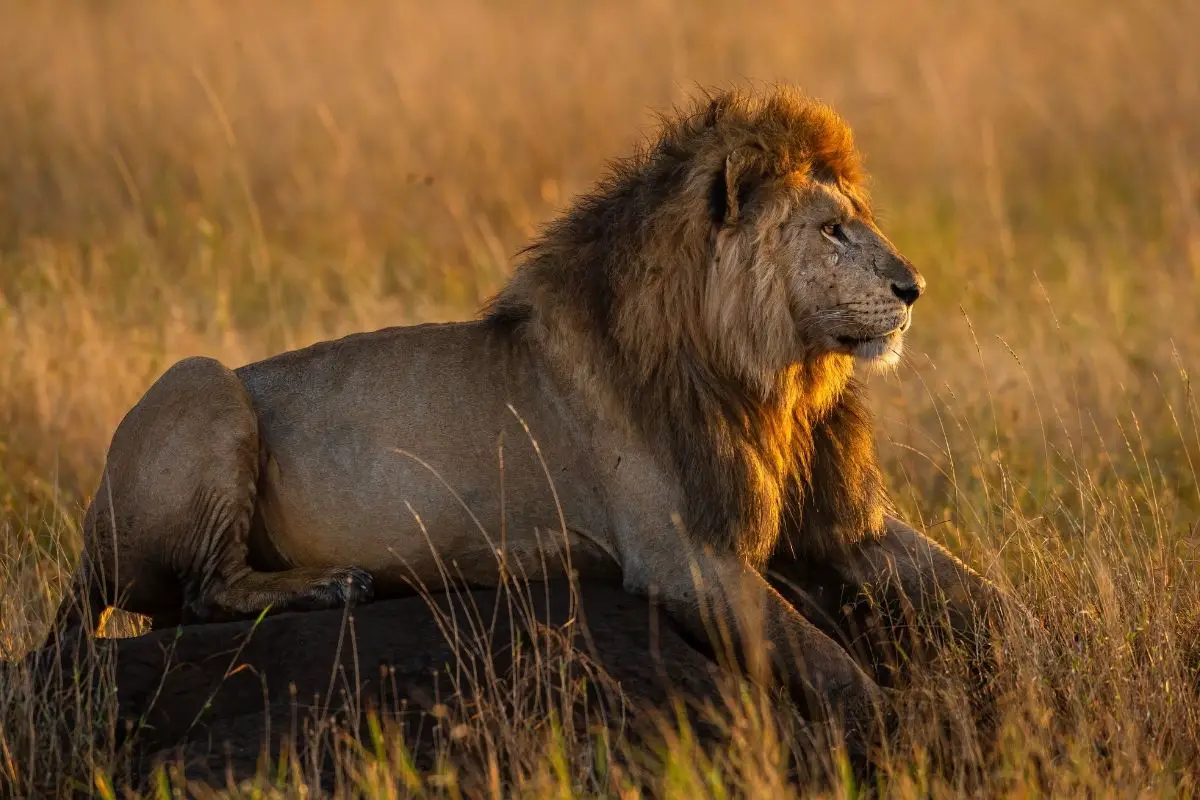Updated: January 2025
When most people think about lion reproduction, they picture a single cub following its mother across the African savanna. But how many babies can a lion have at once? The answer may surprise you – and it reveals one of nature’s most fascinating survival strategies.
Unlike humans who typically give birth to one baby, lionesses have evolved a dramatically different approach to reproduction. Their litter sizes are nature’s insurance policy against one of the most brutal mortality rates in the animal kingdom, where survival isn’t just challenging – it’s a daily battle against overwhelming odds.
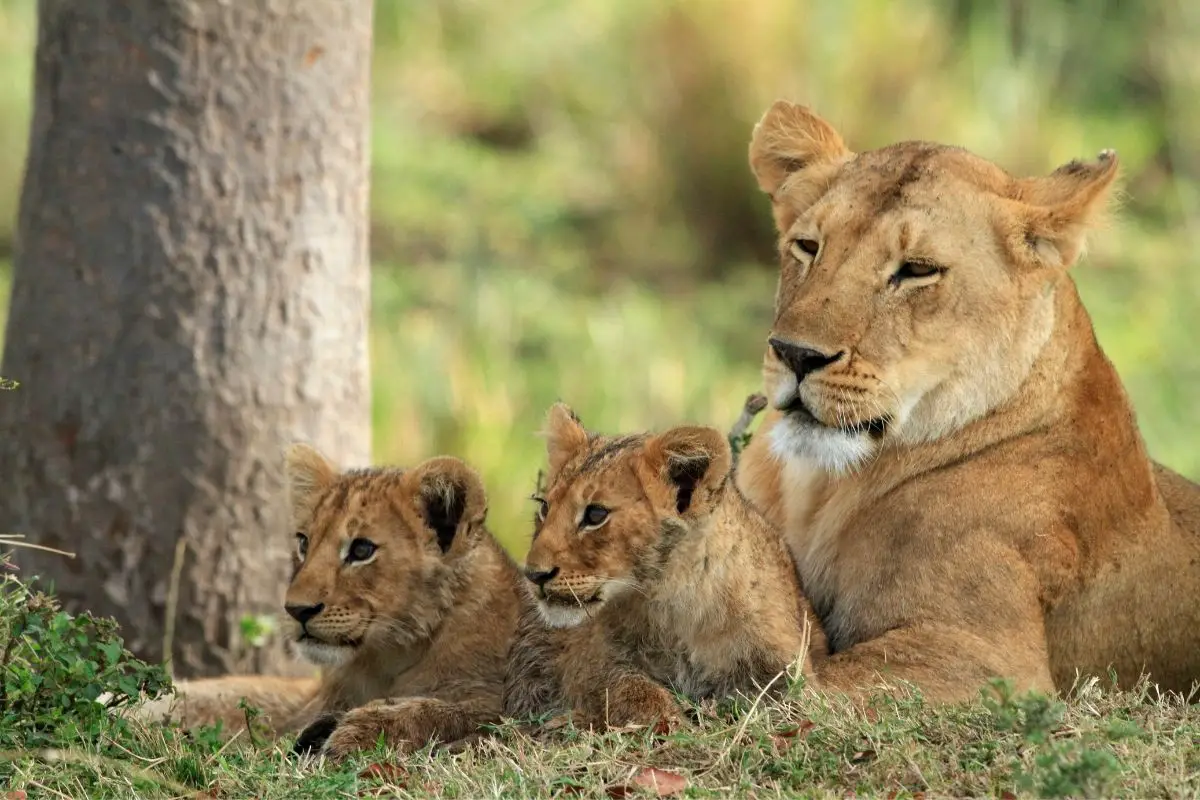
The latest research from 2024 reveals surprising insights about lion reproduction that challenge common assumptions. With wild lion populations now critically low at just 20,000-25,000 individuals – a staggering 95% decline from historical numbers – understanding their breeding patterns has never been more crucial for conservation efforts.
The Surprising Truth: How Many Cubs Lions Actually Have
Lions can have 1-6 cubs per litter, with 2-4 being most common – but here’s what makes this truly surprising: experienced lionesses regularly produce larger litters than most people expect, while environmental factors can dramatically influence these numbers.
Recent data from conservation organizations shows the detailed breakdown:
- Average litter size: 2-3 cubs
- Full range: 1-6 cubs (rarely up to 7)
- First-time mothers: Usually 1-2 cubs
- Experienced mothers: 3-4 cubs more common
- Record cases: Up to 6-7 cubs documented in optimal conditions
What surprises many researchers is how significantly these numbers vary based on the lioness’s experience and environmental conditions. A prime female in her peak reproductive years (ages 5-10) with abundant prey can produce substantially larger litters than struggling first-time mothers in drought conditions.
After a gestation period of 110 days (approximately 3.7 months), lionesses seek secluded dens away from the pride. These vulnerable newborns weigh only 1-2 pounds and are born blind and helpless, requiring intensive maternal care for survival.
Factors That Determine Litter Size
The number of cubs a lioness can have at once depends on several critical factors that researchers have identified through decades of field studies:
- Lioness age and experience: Prime females (4-8 years) consistently produce larger litters
- Nutritional status: Well-fed lionesses have more cubs and better milk production capacity
- Environmental conditions: Drought and prey scarcity can reduce litter sizes by 40-50%
- Genetic factors: Some bloodlines naturally produce larger litters across generations
- Pride stability: Territorial disputes and male takeovers create stress that affects reproduction
- Seasonal timing: Births often peak during prey abundance periods
Why Lion Cub Survival Rates Make Large Litters Essential
Understanding why lions have multiple babies at once becomes clear when examining the brutal reality of cub survival. Only 30-40% of lion cubs survive their first year in protected areas, while this rate plummets to just 10-20% in unprotected regions – explaining why large litters are evolutionary necessities.
The latest 2024 research from the Panthera organization reveals updated survival statistics that highlight the challenges facing lion cubs:
Primary Threats to Cub Survival
Infanticide by rival males accounts for approximately 40% of cub deaths – the highest single cause of mortality. When new males take over a pride, they systematically eliminate existing cubs to bring females back into estrus. This brutal strategy, while devastating, is evolutionarily effective for passing on their genes.
Starvation and malnutrition claim another 25% of cubs, particularly during drought periods when prey becomes scarce. Cubs require 2-3 kg of meat daily once weaned but must compete with adults who consume 15-20 kg per meal. The weakest cubs in large litters often cannot access sufficient food.
Predation by other species represents 20% of mortality, with hyenas, leopards, wild dogs, and large pythons posing constant threats. Spotted hyenas are particularly dangerous, often raiding dens when mothers hunt. Some populations experience up to 15% cub mortality from hyena attacks alone.
Disease and injury account for the remaining 15% of deaths. Cubs’ developing immune systems make them vulnerable to respiratory infections, parasites, and injuries during den relocations. Male lions’ protective behavior can help, but cannot eliminate all health risks.
To protect her multiple cubs, a lioness moves them between 3-6 different dens during their first 6-8 weeks, carrying each one individually in her mouth. This exhausting process can take hours and leaves cubs vulnerable during transport, but it’s essential for avoiding detection by predators and rival lions.
Regional Variations: Where Cubs Have Better Chances
Recent studies reveal dramatic regional differences in how many babies lions can successfully raise, directly correlating with environmental protection levels and prey availability.
Protected Reserve Success Rates
In well-managed reserves like the Serengeti, lionesses maintaining larger litters show impressive success rates:
- Serengeti National Park: 67% first-year survival rate
- Maasai Mara: 58% survival to independence
- Kruger National Park: 45% survival (lower due to higher predator density)
These protected areas allow lionesses to utilize their full reproductive potential, with experienced mothers successfully raising 3-4 cubs from larger litters.
Unprotected Area Challenges
Outside protected boundaries, the reality is harsh:
- Human-wildlife conflict zones: 10-20% cub survival
- Drought-affected regions: 15-25% survival rates
- Heavily fragmented habitats: Often less than 30% survive to independence
These statistics explain why conservation efforts focus intensively on protecting core breeding areas where lionesses can successfully raise the maximum number of cubs from their litters.
The Complete Reproductive Picture: From Birth to Independence
Understanding the full timeline helps explain why how many babies a lion can have at once is just one piece of a complex reproductive puzzle that spans years, not months.
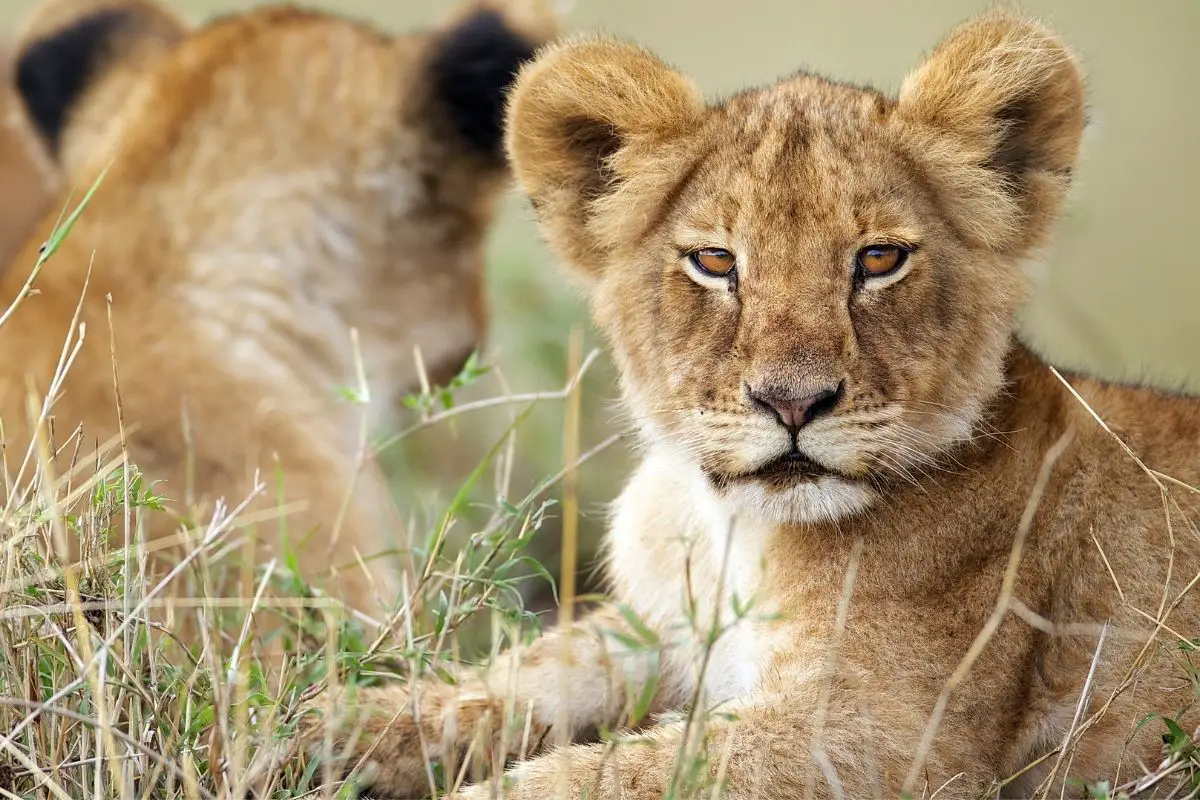
Cub Development Timeline
The journey from helpless newborn to independent hunter spans nearly two years:
- 0-8 weeks: Cubs remain hidden in dens, nursing exclusively
- 2-3 months: Introduction to pride, beginning to follow mother
- 6-8 months: Weaning begins, learning to eat meat
- 12-15 months: First hunting attempts, still dependent on mother
- 18-24 months: Reach independence, may leave or stay with pride
- 3-4 years: Sexual maturity, ready to reproduce
Lifetime Reproductive Success
A lioness’s reproductive lifespan typically spans 8-12 years (ages 3-15), during which she may:
- Produce 4-6 litters during her reproductive years
- Give birth to 12-20 total cubs
- Successfully raise 3-8 cubs to independence
- See 1-3 cubs survive to breed themselves
These numbers highlight why the question of how many babies a lion can have at once is so crucial – each litter represents a significant investment in species survival.
Modern Conservation Implications and 2025 Research
Current research using GPS collars, camera traps, and genetic sampling provides unprecedented insights into lion reproduction. The African Wildlife Foundation reports that understanding optimal litter sizes and survival rates is critical for species recovery planning.
Climate Change Impact on Reproduction
2024 studies reveal climate change significantly affects how many cubs lionesses can successfully raise:
- Changing rainfall patterns disrupt prey migration timing
- Increased drought frequency reduces average litter sizes
- Habitat fragmentation limits genetic diversity in breeding populations
- Human encroachment increases stress and reduces reproductive success
Conservation Success Stories
Effective conservation programs demonstrate that protecting breeding females and their cubs can dramatically improve outcomes:
- Community-based conservation programs show 40% improvement in cub survival
- Corridor management connecting fragmented habitats increases genetic diversity
- Prey restoration projects allow lionesses to maximize their reproductive potential
- Anti-poaching efforts protect breeding-age females from human threats
Understanding the value of each lion cub – both ecologically and economically – helps drive conservation funding and community engagement.
What This Means for Lion Conservation
The answer to “how many babies can a lion have at once” reveals a species walking a tightrope between extinction and survival. With wild populations at historic lows, every cub represents hope for species recovery – but only if conservation efforts can improve their survival odds.
Key takeaways for supporting lion conservation:
- Support organizations protecting core breeding areas where lionesses can raise larger litters successfully
- Advocate for corridor creation connecting fragmented habitats to maintain genetic diversity
- Promote community-based conservation that includes local populations in protection efforts
- Address climate change to maintain prey populations that support successful reproduction
The remarkable reproductive strategy that allows lionesses to produce 2-6 cubs per litter has sustained Africa’s apex predator for millions of years. Whether it can continue to do so in the face of modern challenges depends on immediate conservation action to protect these magnificent cats and their vulnerable cubs.
Every time you see images of a lioness with her cubs, remember that you’re witnessing one of nature’s most sophisticated survival strategies – and a reminder that protecting these incredible animals requires understanding not just how many babies they can have, but ensuring those babies have a fighting chance at survival in an increasingly challenging world.
- Bengal Cat vs Wild Bengal Tiger: Complete Comparison 2025 - October 31, 2025
- Complete Wild Cat Spotting Guide for Hikers 2025 - October 31, 2025
- Lynx vs Bobcat: Complete Field Identification Guide 2025 - October 30, 2025

